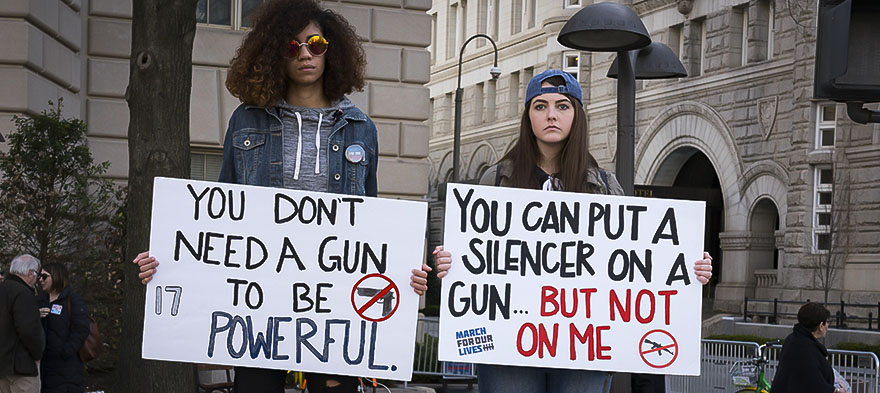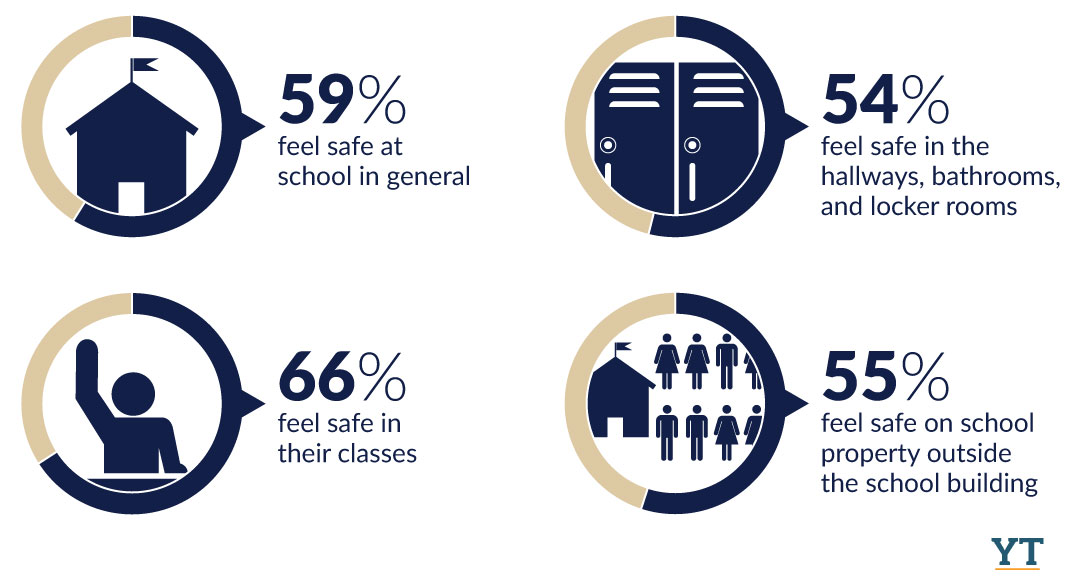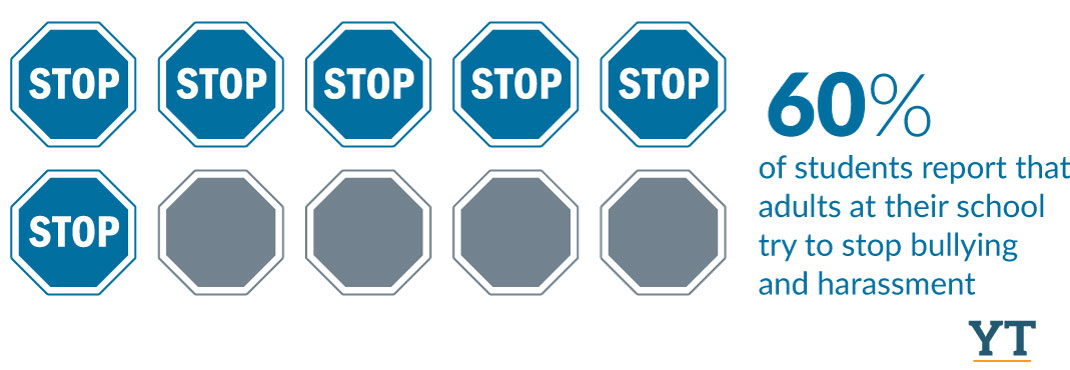
May 18, 2018 12:00:00 AM
 Less than two thirds of students report that adults at their schools try to stop bullying and harassment. Only 60 percent of students report that adults at their school try to stop bullying and harassment. Adults are the role models in the school community, and the perception that adults are not addressing bullying and harassment can make students feel less safe and negatively affect overall school culture.
Less than two thirds of students report that adults at their schools try to stop bullying and harassment. Only 60 percent of students report that adults at their school try to stop bullying and harassment. Adults are the role models in the school community, and the perception that adults are not addressing bullying and harassment can make students feel less safe and negatively affect overall school culture.
 About a third of students report that students get into fights at least somewhat often, and that they feel they must be ready to defend themselves at least somewhat often. When asked about the prevalence of fights, 37 percent of students report that fights occur at least somewhat often. Additionally, 31 percent of students report that they feel they must be ready to defend themselves at least somewhat often. Schools where physical fights are common are likely less able to maintain a focused learning environment. Thanks to this recent wave of student activism, a
flurry of solutions for how to improve school safety are being suggested. In this time, [pullquote position="right"]we need to remember to keep student voices at the center of this decision-making.[/pullquote] After all, they are the ones we are working to protect. Asking for students’ feedback—and truly engaging them as partners—is an important step towards creating safer schools. Creating regular spaces for feedback can provide an avenue for students to give consistent and honest reflections on their experiences at their school sites. This feedback can better equip school and district leaders to identify concerns and better target resources and interventions. The end result of this movement is still to be seen. This new generation of students fighting for their voices to be heard stand on the shoulders of the survivors and activists that came before them. And this year, the ripples in the pond started as tsunami-sized waves. This is the moment for educators to ride this wave and actively listen to and engage with students as valid and important voices in the movement for safer schools.
About a third of students report that students get into fights at least somewhat often, and that they feel they must be ready to defend themselves at least somewhat often. When asked about the prevalence of fights, 37 percent of students report that fights occur at least somewhat often. Additionally, 31 percent of students report that they feel they must be ready to defend themselves at least somewhat often. Schools where physical fights are common are likely less able to maintain a focused learning environment. Thanks to this recent wave of student activism, a
flurry of solutions for how to improve school safety are being suggested. In this time, [pullquote position="right"]we need to remember to keep student voices at the center of this decision-making.[/pullquote] After all, they are the ones we are working to protect. Asking for students’ feedback—and truly engaging them as partners—is an important step towards creating safer schools. Creating regular spaces for feedback can provide an avenue for students to give consistent and honest reflections on their experiences at their school sites. This feedback can better equip school and district leaders to identify concerns and better target resources and interventions. The end result of this movement is still to be seen. This new generation of students fighting for their voices to be heard stand on the shoulders of the survivors and activists that came before them. And this year, the ripples in the pond started as tsunami-sized waves. This is the moment for educators to ride this wave and actively listen to and engage with students as valid and important voices in the movement for safer schools.
Jimmy Simpson Jr. is the Partnerships Lead at YouthTruth Student Survey, where he works to show that student and stakeholder voice matters.
Few issues in education spark more tension and debate than standardized testing. Are they a tool for equity or a burden on students? A necessary check on school systems or a flawed measure of...
Charter schools are public schools with a purpose. Operating independently from traditional school districts, they're tuition-free, open to all students, and publicly funded—but with more flexibility...
Despite the benefits of a diverse teaching force, prospective teachers of color fall out of our leaky preparation pipeline at every stage: preparation, hiring, induction, and retention. Here’s what...
Ed Post is the flagship website platform of brightbeam, a 501(c3) network of education activists and influencers demanding a better education and a brighter future for every child.
© 2020-2025 brightbeam. All rights reserved.
Leave a Comment